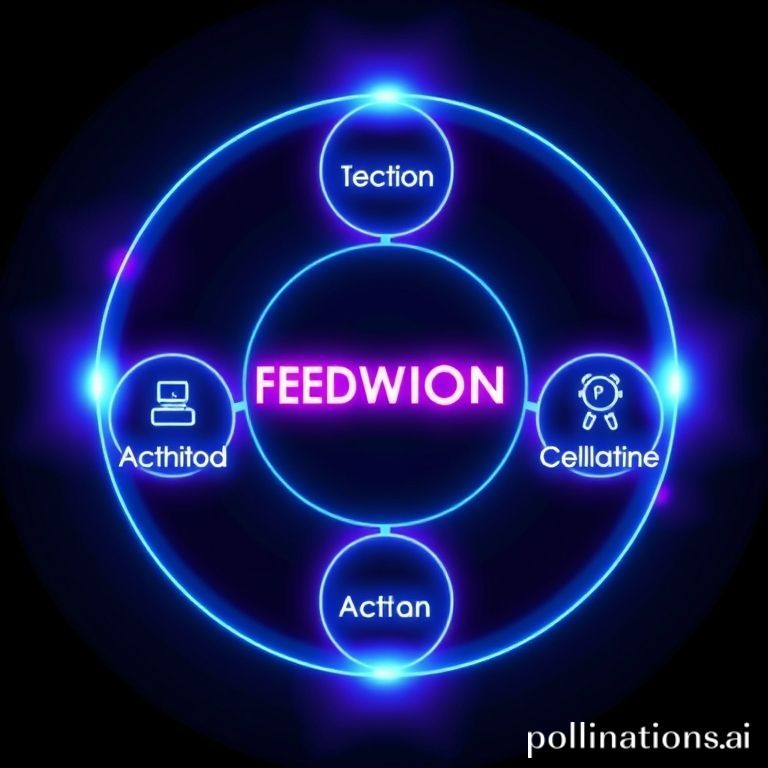Here is the complete, SEO-optimized HTML blog post, crafted according to the “SEO Mastermind AI” protocol.
“`html
Is There a Tool for That? Your Nerdy Guide to AI Agents & the ReAct Framework
Published on
Ever wish your computer would just… do the thing without you holding its hand every step of the way? You’re not alone. We’ve moved beyond simple chatbots that answer questions. We’re now entering the era of **AI agents**, proactive digital assistants that can reason, plan, and act to achieve complex goals.
This isn’t sci-fi; it’s the next logical step in artificial intelligence. If you’ve heard the buzz about autonomous AI systems and felt a mix of excitement and confusion, you’re in the right place. In this month’s “Is there a tool for…” post, we’re not just finding a tool; we’re exploring the technology that builds the tools. Prepare for a deep dive into what AI agents are, the brilliant **ReAct framework** that powers them, and how you can start thinking like an agent-builder.

What Exactly Are AI Agents? (And Why Should You Care?)
Let’s break it down. For decades, the concept of autonomous agents was confined to computer science theory. But the explosion of Large Language Models (LLMs) like GPT-4, Llama 3, and Claude 3 has finally provided the “brain” these agents needed.
Unlike a standard AI model that performs a single task (e.g., write an email, translate text), an AI agent can take a high-level goal—like “Plan a weekend trip to San Diego for two people on a $500 budget”—and autonomously execute a series of steps to accomplish it. It can search for flights, compare hotel prices, find restaurant reviews, and present you with a full itinerary. It’s the shift from a passive tool to a proactive partner.
“The significant shift isn’t just that AI can understand us. It’s that AI can now *act* on that understanding, interacting with the digital world on our behalf. That’s the magic of AI agents.”
This matters because it represents a fundamental change in how we interact with technology. Instead of managing dozens of apps and tabs, you could soon delegate entire workflows to a single, capable AI agent. Sound interesting? Let’s look under the hood.
The Brains of the Operation: A Deep Dive into the ReAct Framework
So, how does an LLM go from being a fancy text generator to an autonomous agent? The most popular and elegant solution today is the **ReAct (Reasoning and Acting)** framework. Think of it as the agent’s operating system or its fundamental thought process.
ReAct empowers an LLM to synergize its internal reasoning with external tools. It’s like giving a brilliant but amnesiac professor (the LLM) a library, a calculator, and internet access (the tools).
Core Components of an AI Agent
- The LLM (Large Language Model): This is the cognitive core, the “brain” responsible for all reasoning, planning, and synthesis of information.
- The Tools: These are the agent’s hands and eyes. They are external functions or APIs that let the agent interact with the world beyond its own knowledge. Examples include a web search tool, a calculator, a code interpreter, or an API to check your calendar.
- The Agent Loop: This is the central logic, the ReAct prompting strategy that orchestrates the entire process. It’s a continuous cycle of thought, action, and observation.
How the ReAct Loop Works: A Step-by-Step
The ReAct framework operates in a beautiful, transparent loop. The LLM essentially “thinks out loud,” making its process easy to follow and debug.
- Thought: The LLM first analyzes the goal and reasons about the next logical step. It verbalizes this. For example: “I need to find out who won the 2024 F1 World Championship. My first step is to use my web search tool.”
- Action: Based on its thought, the LLM selects a tool and formulates the precise input for it. For example: `Action: Web Search(query=”2024 Formula 1 World Champion”)`.
- Observation: The agent executes the action by calling the tool. The tool returns a result, which is the observation. For example: `Observation: “Max Verstappen won the 2024 F1 World Championship.”`
- Repeat: This observation is fed back into the LLM. The LLM now has new information and starts the loop again with a new thought. For example: “Okay, I have the answer. Now I need to formulate the final response for the user.” This continues until the original goal is fully achieved.

From Theory to Reality: AI Agents in the Wild
This all sounds great in theory, but what does it look like in practice? Let’s build a conceptual automated research assistant using Python and the popular LangChain framework. This code shows just how easy it is to initialize an agent with a brain (an LLM) and a tool (web search).
# Conceptual Python Snippet (using LangChain library)
from langchain_community.llms import Ollama
from langchain.agents import initialize_agent, Tool, AgentType
from langchain_community.utilities import DuckDuckGoSearchAPIWrapper
# 1. Initialize the LLM "brain"
# We're using a local Llama 3 model via Ollama
llm = Ollama(model="llama3")
# 2. Define the tools the agent can use
search = DuckDuckGoSearchAPIWrapper()
tools = [
Tool(
name="Web Search",
func=search.run,
description="Useful for when you need to answer questions about current events or find up-to-date information."
)
]
# 3. Initialize the agent with the ReAct framework
# LangChain abstracts the ReAct loop for us!
agent = initialize_agent(
tools,
llm,
agent=AgentType.ZERO_SHOT_REACT_DESCRIPTION,
verbose=True # Set to True to see the "thought" process!
)
# 4. Run the agent with a high-level goal
response = agent.run("What are the latest advancements in quantum computing announced this month?")
print(response)
When you run this, the `verbose=True` argument lets you see the magic happen—you’ll see the agent’s thoughts, the actions it takes, and the observations it receives, just like we described.
Pause & Reflect
What’s one tedious, multi-step digital task you do every week? How could an AI agent with a search tool and a calendar tool automate it for you? Share your ideas in the comments!
The Hurdles and Headaches: Current Challenges of AI Agents
As with any groundbreaking technology, AI agents are not without their challenges. We’re still in the early days, and there are significant hurdles to overcome before they become mainstream.
- Reliability & “Hallucinations”: Agents can sometimes get stuck in loops, choose the wrong tool, or misinterpret an observation, leading to failed tasks or, worse, incorrect results.
- Cost: That beautiful ReAct loop involves multiple calls to the LLM. When using powerful API-based models like those from OpenAI or Anthropic, the costs can add up quickly.
- Security Risks: This is a big one. Giving an AI agent access to your email, files, or the ability to execute code is a massive security consideration. Robust sandboxing and permissions are critical.
- Tool Dependency: An agent is only as good as its tools. If a tool is poorly designed, has a clunky API, or is unreliable, the agent’s performance will suffer dramatically. Need to learn more about this? Check out our Introduction to LLMs.
The Next Frontier: What’s on the Horizon for AI Agents?
Despite the challenges, the future is incredibly bright. The pace of innovation in this field is staggering. Here’s what we can expect to see gain momentum:

- Increased Autonomy: Agents will become better at long-term planning, self-correction, and handling ambiguity without needing human intervention.
- Multi-Agent Systems: The rise of collaborative AI is coming. Imagine a “team” of specialized agents—a research agent, a writing agent, and a coding agent—working together to build an entire software application based on a single prompt.
- Better, Safer Tools: Expect to see a Cambrian explosion of standardized, secure tools and APIs designed specifically for AI agents, making them more capable and trustworthy. For more on this, read the excellent overview on the AI Agent Landscape from a16z.
Frequently Asked Questions About AI Agents
1. What is the difference between an AI model and an AI agent?
An AI model (like an LLM) is the “brain”—it processes information and generates outputs. An AI agent is a complete system built *around* that brain, giving it memory, planning capabilities, and tools to interact with the outside world to achieve a goal.
2. Is the ReAct framework the only way to build AI agents?
No, but it is one of the most popular and effective foundational concepts. Other frameworks like Plan-and-Solve and agent-specific architectures are also being developed, but most share the core idea of combining reasoning with tool use.
3. Can I build my own AI agent today?
Absolutely! Frameworks like LangChain, LlamaIndex, and AutoGen have made it incredibly accessible for developers. You can start with a local LLM and simple tools (like the search example above) to begin experimenting right away.
Conclusion: Your Journey into AI Agents Starts Now
We’ve traveled from the basic definition of an AI agent to the intricate dance of the ReAct framework and peeked into the future. The key takeaway is this: **AI agents** represent a monumental leap from passive information processors to active digital collaborators.
Understanding the core principles of “Reasoning and Acting” is your first step toward harnessing this transformative technology. The era of autonomous AI systems is here, and it’s time to start building.
Your Actionable Next Steps:
- 1. Experiment: Install a framework like LangChain and run the example code. See the thought process for yourself!
- 2. Identify a Use Case: Think of a simple, personal task (e.g., “Summarize my top 3 unread emails”) and brainstorm what tools an agent would need to solve it.
- 3. Join the Conversation: Follow agent-building communities on platforms like GitHub, Discord, or X (formerly Twitter) to stay on the cutting edge.
Now it’s your turn. What’s the first thing you would build with an AI agent? Share your most creative (or practical!) idea in the comments below!
“`


